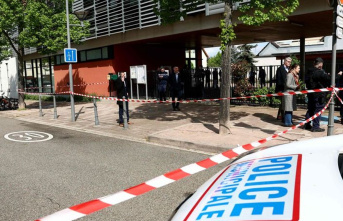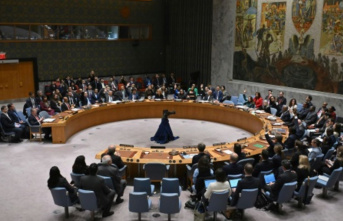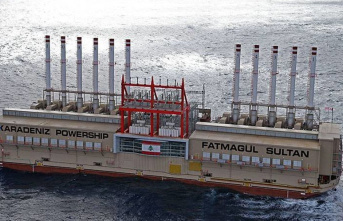Travelers on long-distance trains must continue to wear masks to protect themselves against infection with the corona virus, passengers on the plane do not. Federal Health Minister Karl Lauterbach (SPD) recently said that the risk of becoming infected is “much higher” on buses and trains than in air travel. But it's not that easy.
The respective ventilation systems play a role in the spread of potentially infectious droplets and aerosols that are expelled when breathing, coughing or sneezing. And this is where airplanes and trains differ.
The type of air filter is crucial
Aircraft cabins are a kind of closed system in which the air is extracted, passed through filters and then returned enriched with outside air. So-called HEPA filters in planes can intercept viruses and aerosols from the air. In long-distance trains, on the other hand, class G4 filters are usually used. They are coarser and usually not suitable against aerosols and viruses.
The air that flows out of the jets into an airplane usually does not contain any corona viruses. The Association of Airlines (IATA) claims that the cabin air is completely replaced with fresh air every two to three minutes and therefore there is an atmosphere like in an operating room - a statement that according to Dieter Scholz from the Department of Vehicle Technology and Aircraft Construction at the University of Applied Sciences Applied Sciences Hamburg cannot be held. According to him, the exchange of air takes longer than a few minutes, and the cabin is not completely virus-free.
It can therefore be assumed that passengers in the immediate vicinity of an infected person - also in the rows of seats in front of and behind them - are more at risk of possible infection than other people on the plane. A properly worn mouth and nose cover can therefore provide additional protection.
Air exchange every seven minutes in the ICE
The following also applies to trains: “Consistently wearing a well-fitting FFP2 mask” has proven to be one of the most effective measures against corona infection, as the German Center for Rail Transport Research explained in June 2021.
According to Deutsche Bahn, the air in an ICE is replaced every seven minutes, but only through the coarser G4 filter. A joint study with the Institute for Aerodynamics and Flow Technology at the German Aerospace Center from the end of 2020 showed that the air conditioning in trains does not contribute to the spread of aerosols. It was said that the spread “only took place over a few rows of seats”.
"We didn't see any major superspreading events either on the trains or on the planes," said virologist Hendrik Streeck on n-tv on Wednesday. "There are individual studies that have shown that transmission can occur."
There is no reliable overview of how many people have been infected on airplanes or trains in the past. Contact tracing was often not possible.












